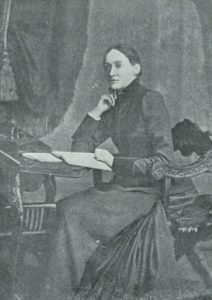Periodicals Page
‘Because women did not have access to the same sites of social and professional interaction as men, they often formed alternative networks. Certainly, periodicals could be used as a virtual “spaces” where such professional networking might take place’.[1]
‘Magazines are public documents in ways that standalone fiction is not, and the ideological shifts and reinventions that occur in the pages of a minority of titles from this period are revelatory. Irish versions of women’s periodicals offered readers the virtual space in which their voices might be heard, in which their words would be published, in which they might express themselves as consumers of the “new”’.[2]

Nineteenth-century periodicals offer an extraordinary resource for scholars working on Victorian women’s writing across disciplines (history, literature, science, networks, etc.) and across genres (fiction, poetry, drama, journalism, travel writing, to name a few). The riches of these publications have been enhanced and made more accessible through digitisation processes. More specifically, ‘[t]he digital turn in the study of women and the periodical press’, as Alexis Easley notes, ‘presents a host of new challenges and opportunities for our work as feminist scholars’.[3] These opportunities and challenges are equally visible in the recent attention to publications by Irish women writers in nineteenth-century magazines and journals, and the newspaper and periodical press in Ireland. It is an emergent but already vibrant and exciting field of study.
This page offers researchers in this area a space to reflect on their work, sketch out new discoveries, discuss recently recovered material, offer a taste of forthcoming work, network with other researchers and much more. We are delighted to launch the page with the following articles by Mary McCartney and Tove Lilith Conway respectively, both of which evidence the rich potential of the periodical press as a source of research into Irish women’s writing
- Between Two Worlds: Examining “Merry England” as an Outlet for Irish Women WritersMary McCartney, University of St. Thomas In 1885, Katharine Tynan sent a letter to Alice Meynell thanking her for reviewing Tynan’s book Louise de la Vallière and Other Poems in the monthly periodical Merry England (1883–1895). Tynan writes, “It is a beautiful review, and…
- Irish Women Writers and the Argosy (1865-1901)Tove Lilith Conway, University of St. Thomas The title of the Argosy (1865-1901) conjured up the idea of a ship filled with rich cargo. Indeed, each monthly issue of the magazine offered tales of travel and adventure, along with a steady supply of fiction,…
Kathryn Laing
Contact us here if you would like to contribute a short review, article etc.
[1] Alexis Easley, Introduction to the Special Issue: Victorian Networks and the Periodical Press, Victorian Periodicals Review, Volume 44, Number 2, Summer 2011, pp. 112-113.
[2] Elizabeth Tilley, ‘Watch this Space: Late Nineteenth-Century Women’s Periodicals in Ireland’ in Women, Periodicals, and Print Culture in Britain, 1890s1920s: the Modernist Period, eds. Faith Binckes and Carey Snyder (Edinburgh: Edinburgh University Press, 2019), p. 21.
[3] Alexis Easley, ‘Chance Encounters, Rediscovery, and Loss: Researching Victorian Women Journalists in the Digital Age’, Victorian Periodicals Review, Volume 49, Number 4, Winter 2016, p. 695.



